BMW Airhead oil pans, sump pickups, and dipsticks
There were two upgrades for road models during the life of the 24x motor. In 1976 the pan was deepened slightly, and in 1981 the pan was deepened substantially and redesigned to include a baffle plate. Dipsticks were lengthened correspondingly, although the cutoff points for them are nowhere near being clear or consistent.
The enduro models retained the shallow oil pan (with threaded bosses for a bash plate), although this was deepened slightly in 1991.
Note: Enduro models for this purpose include not only the G/S and GS, but also the Roadster and Mystik since they had the same configuration.
History
These are the original combinations which work together properly.
1970-1975 road, early R65, and 1980-1990 enduro
11 13 1 337 330 shallow oil pan (without threaded holes was
11 13 1 251 295, now obsolete)
11 43 1 252 661 metal dipstick with 247mm MAX mark for early bikes
(now obsolete)
11 43 1 337 543 "B" plastic dipstick on later bikes
11 41 1 252 223 steel pickup head w/16mm bolts
1976-1980 road
11 31 1 262 723 deeper pan
–– –– – ––– ––– metal dipstick with 255mm MAX mark in '76 and some '77
–– –– – ––– ––– metal dipstick with 260mm MAX mark starting '77 or '78
11 41 1 262 971 extension for use with 223 head, for /6.
12mm phenolic. Functionally obsolete. 28mm bolts
11 41 1 265 590 extension for use with 223 head, for /7. 10mm aluminum. 28mm bolts.
1981-on road
11 13 1 336 995 deepest oil pan, with baffle
–– –– – ––– ––– metal dipstick with 260mm MAX mark on some bikes
11 43 1 337 542 "A" plastic dipstick on some bikes
11 41 1 337 536 44mm cast pickup head w/50mm bolts
1991-on enduro (inc. R & Mystik)
These used a 1/2" deeper pan with the drain hole in the rear wall, possibly to work better with the PD bash plate. The dipstick has the same length and MIN marking as the earlier GS one, but the MAX mark is lower. A baffle was added inside a new, shorter cast pickup head.
11 13 1 338 620 oil pan
11 43 1 338 635 "C" dipstick
11 41 1 338 632 33mm cast pickup head w/40mm bolts
11 41 1 338 634 baffle inside pickup head
Pans
Early pans were shallow with no baffle. These used a simple metal pickup head.
In 1976 they were deepened, and a 10mm spacer was used to lower the pickup head. Dipsticks were lengthened correspondingly.
In 1981 they got slightly deeper still, with a baffle at the front to keep oil close to the pickup head during moments of brief deceleration. This design used an all-new one-piece cast aluminum pickup. Same dipstick as before, but now with a plastic handle.
The G/S and GS (along with the R and Mystic) always had shallow oil pans. 80-90 models were dimensionally identical to the /5 (except they had threaded holes to mount a bash plate), while '91-'95 models had a 1/2" deeper, smooth-bottom pan with a lower MAX mark on the dipstick. The shallow pan with the threaded holes is now the replacement for the /5.
| Part number | External depth | Volume | Notes | |
|---|---|---|---|---|
| Front | Rear | |||
| 11 13 1 251 295 | 38mm | 21mm | '70-'75, R65 through '80 (obsolete) | |
| 11 13 1 337 330 | 40mm | 19mm | Enduro through '90, holes for bash plate | |
| 11 31 1 262 723 | 55mm | 29mm | 1250ml | '76-'80 |
| 11 13 1 336 995 | 66mm | 48mm | 1650ml | '81-'95 (not enduro), rearward-facing drain. |
| 11 13 1 338 620 | 52mm | 32mm | '91 and later enduro, rearward-facing drain, smooth bottom. |
|
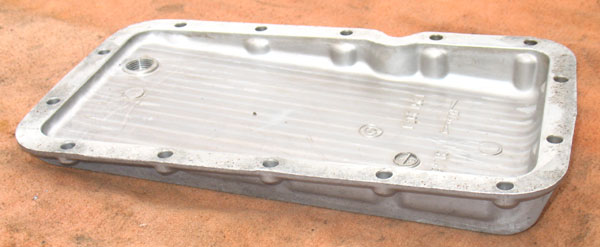
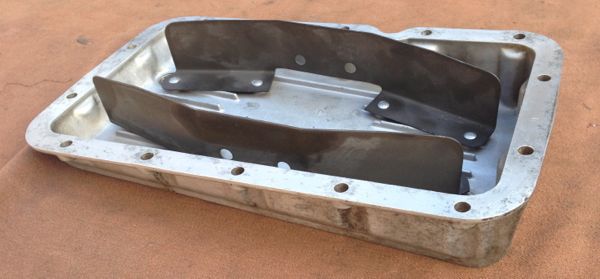
Very soon after introduction, the internal baffle was eliminated. Most will look like this:
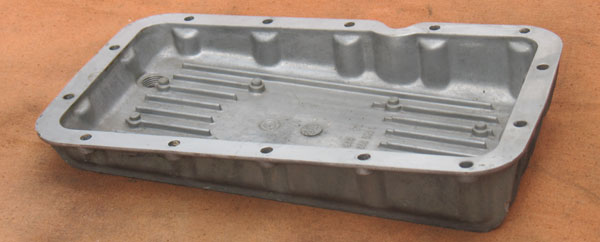
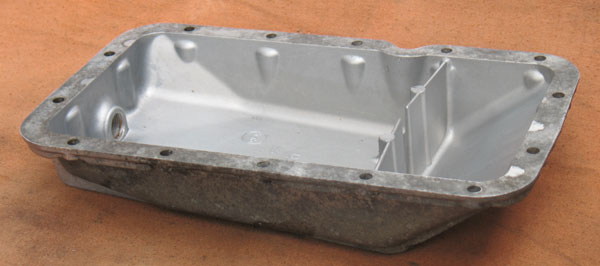
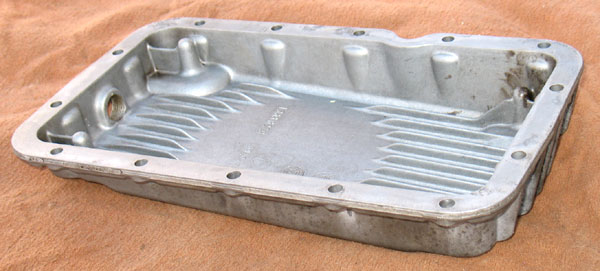
Dipsticks
Dipsticks had plastic handles after 1980, with the letters A, B, or C molded in. The equivalent plastic-handle version is the current replacement for earlier metal ones.
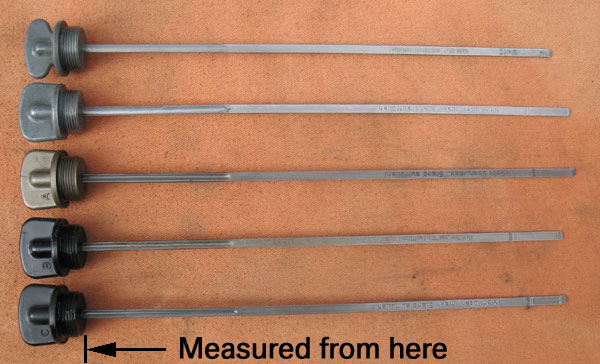
From the top:
| Part number | Max | Min | OA | Notes |
|---|---|---|---|---|
| 11 43 1 252 661 | 247 | 274 | 277 | Metal handle, from /5. Superseded by "B". |
| [not shown] | 255 | 282 | 287 | Metal handle, '76 and '77 models. Superseded by "A". |
| –– –– – ––– ––– | 260 | 282 | 287 | Metal handle, from '78. Superseded by "A". |
| 11 43 1 337 542 | 263 | 284 | 288 | "A" plastic handle, from '84 R65. |
| 11 43 1 337 543 | 247 | 273 | 277 | "B" plastic handle, from '88 GS. |
| 11 43 1 338 635 | 256 | 274 | 278 | "C" plastic handle, from '91 GS. Like B, but MAX is lower. |
Oil pickup heads
There are three different pickup heads. All of them are sloped to match the slight wedge shape of the oil pan. Heights are measured from the center of the oil feed hole down to the bottom of the pickup.
The steel type was used starting with the /5, and was extended with the 10mm spacer when the pan got deeper in '76. The original spacer was 12mm, made of phenolic resin. This can compresss with age, causing the bolts to loosen. The 10mm metal spacer is an update.
The cast pickup head was introduced with the deep oil pan in '81, and was 44mm deep. When the oil pan for the GS and R was changed in 1991, a shorter (33mm) version of this pickup was used, along with an internal baffle plate with the opening to the front of the bike.
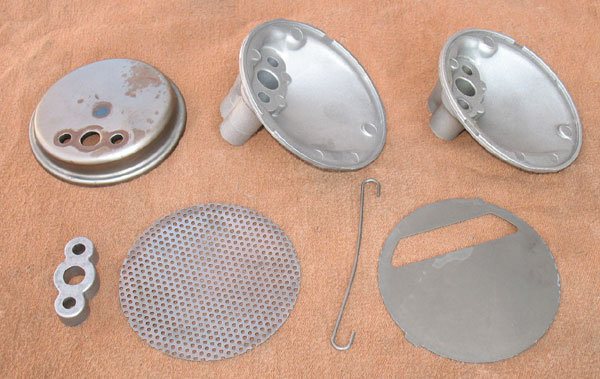
Other parts used on all models
11 41 1 337 509 pickup strainer plate
11 41 1 252 226 wire retainer
11 13 1 338 427 oil pan gasket
11 41 1 265 258 oil pickup gasket (use two with 590 spacer)
Bash plates
The early enduro oil pan takes the flat "waffle" bash plate 51 47 1 242 295 or the wraparound bash plate 71 60 2 315 345. Both have cutouts in the rear to accomodate the downward-facing oil drain hole. This combination was specified for both the G/S and early GS bikes.
The later '91-on oil pan takes the same waffle plate or the wraparound bash plate 71 60 2 315 651, which does not have (or need) the rear cutout for the drain plug.
The hole pattern is the same for all of them, and both wraparound plates have recessed mounting bolts.
Why might I care?
The deep pan and cast pickup are better than the earlier designs, so you can get more reliable oil delivery using the newest parts. Additionally, the greater air volume in the sump means less fluctuation in crankcase pressure and therefore less oil lost through the breather.
If you're looking to upgrade a shallow-pan bike, use the parts that were on the 1995 RT if the centerstand will clear. The original centerstand on the '70~'75 bikes won't clear the deeper sump; you need to replace it with the '76~'80 centerstand (which is all that's available now). The difference is visually apparent; on the new stand the upper crossbar is halfway between the mounting holes and the lower crossbar, whereas on the old stand it's noticeably closer to the mounting holes.
If you're looking to upgrade your early GS, buy the parts that were on the 1995 GS (provided you want to stay with the shallow sump at all).
Aftermarket
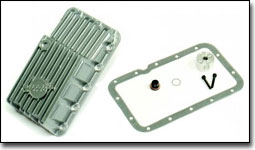
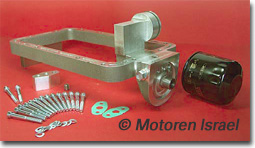
The aftermarket provided several deeper oil pans, especially during the '70s before BMW had a good deep pan of their own.
Most well known is probably the Luftmeister 3-hole sump extension. I'll get a picture of one when I can.
Still made, by MAC which is better known for exhaust systems, is this pan (left) with a step to clear the centerstand brace.
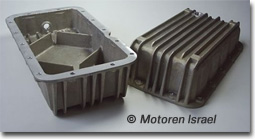
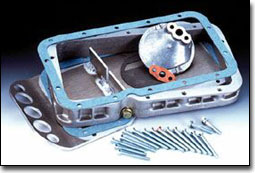
HPN makes this two-part oil pan which uses a flat bottom plate (left) and this forms the engine's 'bash plate' with nothing else required. It's very strong and is used on every rally bike engine.
Motoren-Israel and Siebenrock spacers looking like the HPN sump, but whereas the HPN version is sloped to match the shape of the pickup head, the Siebenrock and MI versions appear to be simple spacers, the same thickness from front to back, which are used with your existing oil pan. A spacer is provided to lower the pickup head to match the new sump bottom.

Motoren-Israel makes a custom sump extension (top right) which replaces the oil filter canister with a fitting for an external spin-on filter. It's available in standard (shown here) and lightweight, which has machined pockets in the sides. They also sell a deep sump and this very distinctive long sump.

